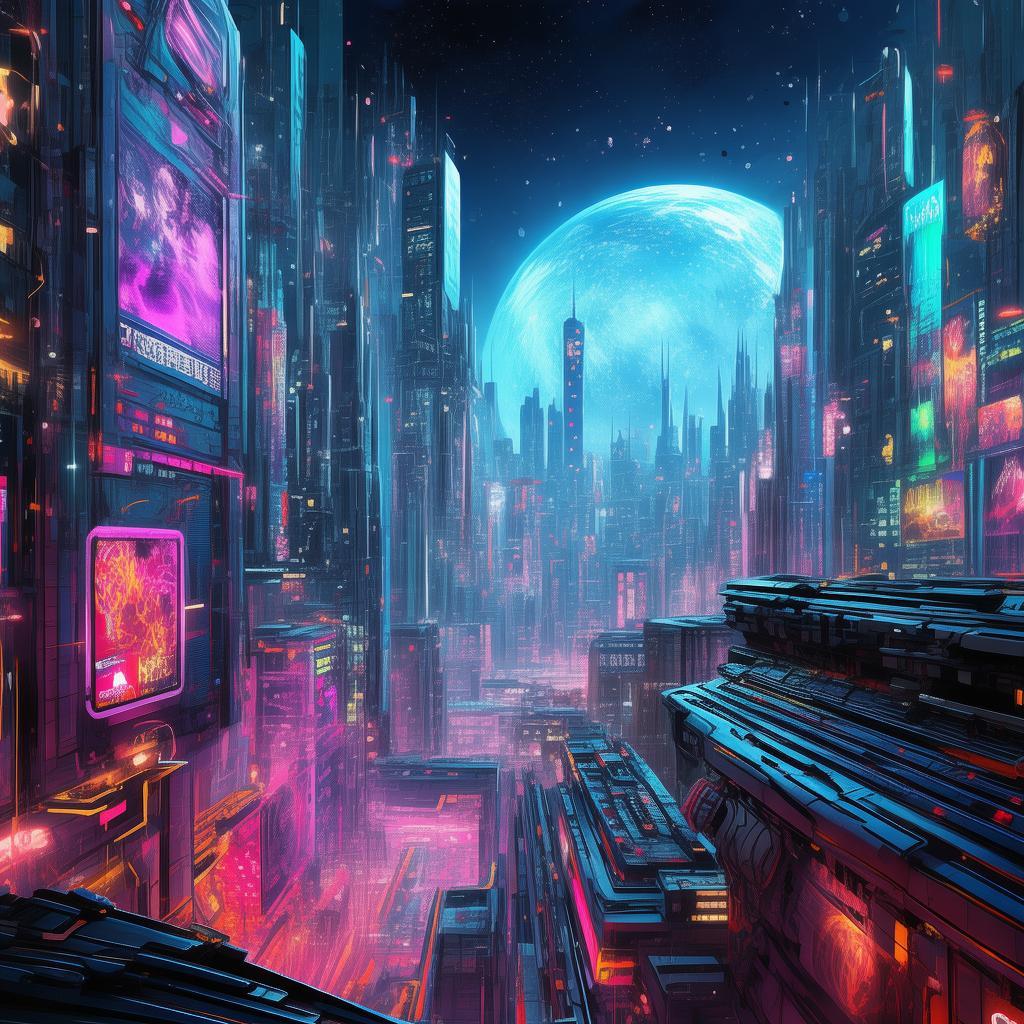Whispers of the Past, Echoes of the Future
In the bustling city of Neo-Venice, a city that stands as a testament to the fusion of past and future, the air was thick with the scent of innovation and decay. The streets were lined with towering structures that were half ancient architecture, half futuristic marvels, their facades adorned with the works of countless artists, each painting and sculpture a snapshot of their era's dreams and fears.
Amara was a young painter whose talent was as rare as it was controversial. Her work, which seemed to defy the laws of physics and time, had been causing quite a stir. Her paintings, while vibrant and life-like, bore a strange quality; they seemed to hold the whispers of the past, the echoes of a time yet to come.
Amara's latest creation, "The Scribe of the Ages," was the centerpiece of the grand opening of the Tempus Art Gallery. The gallery, a collaboration between the wealthy and influential, sought to bridge the gap between history and the future through art. It was a place where the old and the new danced together in a mesmerizing ballet.
As the opening night commenced, a throng of curious onlookers, art enthusiasts, and influential figures filled the gallery. The air was buzzing with excitement and whispers. The painting, which was said to capture a moment from a pivotal historical event, was the talk of the town.
Amara stood before her creation, her eyes reflecting the complexity of her work. The painting depicted a figure, cloaked in rags, writing with a quill that seemed to defy gravity. The words on the parchment were impossible to read, as if the ink was made of shadows that shifted and twisted in the viewer's eyes.

The gallery's curator, an elderly man named Marcus, approached her. "You've done it, Amara," he said with a knowing smile. "This work will change the way we view history and art."
Amara nodded, her eyes fixed on the painting. "It's not just a painting," she replied. "It's a window into the past and a glimpse of the future. It's about the choices we make that shape both."
As the night wore on, the crowd was captivated by the painting. Some were enchanted, others appalled. The figure in the painting, known to history as the Scribe of the Ages, had been a figure of mystery and intrigue. According to legend, he had the power to see through time, to witness the consequences of the choices made by those who came before him.
Suddenly, a commotion erupted near the entrance. A group of young activists, led by a charismatic speaker named Leo, had burst into the gallery. "This is a mockery of history!" Leo shouted. "We won't stand by while art is used to manipulate and control!"
The crowd parted as Leo approached the painting. "You see this figure," he said, pointing at the Scribe. "He is a symbol of resistance. But this painting makes him seem like a hero. In reality, he was a tool of the oppressors!"
The activists began to chant, their voices growing louder. Amara, feeling the weight of their words, approached the painting and reached out to touch the figure. To her shock, the shadows on the parchment began to shift and change. The painting was no longer just a piece of art; it was a time portal.
Leo's eyes widened in horror as he saw the painting come to life. The Scribe of the Ages stepped out of the canvas, his presence overwhelming the room. "You have no idea what you have done," he growled, his voice echoing through the gallery.
The crowd, now frozen in place, watched as the Scribe addressed them. "You stand at a crossroads," he said. "You can continue down the path of manipulation and control, or you can choose to fight for the truth."
The activists and the gallery-goers were thrown into a heated debate. Some were convinced that the Scribe was a demon, a manifestation of their deepest fears. Others saw him as a beacon of hope, a symbol of the power of truth and justice.
Amara, standing amidst the chaos, realized that her work had become more than just art; it was a catalyst for change. She stepped forward, her voice steady. "This painting is a mirror," she said. "It reflects the choices we make. It is up to us to decide what we see in it."
As the night drew to a close, the painting began to fade, the shadows dissolving back into the canvas. The Scribe of the Ages vanished, leaving behind a room filled with a new sense of purpose.
In the days that followed, the debate over the painting's message spread like wildfire. People began to question the role of art in society, the power of truth, and the choices that shape the future. Amara's work had become a viral sensation, sparking conversations and inspiring action.
The Tempus Art Gallery, once a place for entertainment and spectacle, had become a hub for change. And Amara, the young painter who had once only sought to capture the beauty of the world, had become a symbol of the power of art to shape the future.
✨ Original Statement ✨
All articles published on this website (including but not limited to text, images, videos, and other content) are original or authorized for reposting and are protected by relevant laws. Without the explicit written permission of this website, no individual or organization may copy, modify, repost, or use the content for commercial purposes.
If you need to quote or cooperate, please contact this site for authorization. We reserve the right to pursue legal responsibility for any unauthorized use.
Hereby declared.









